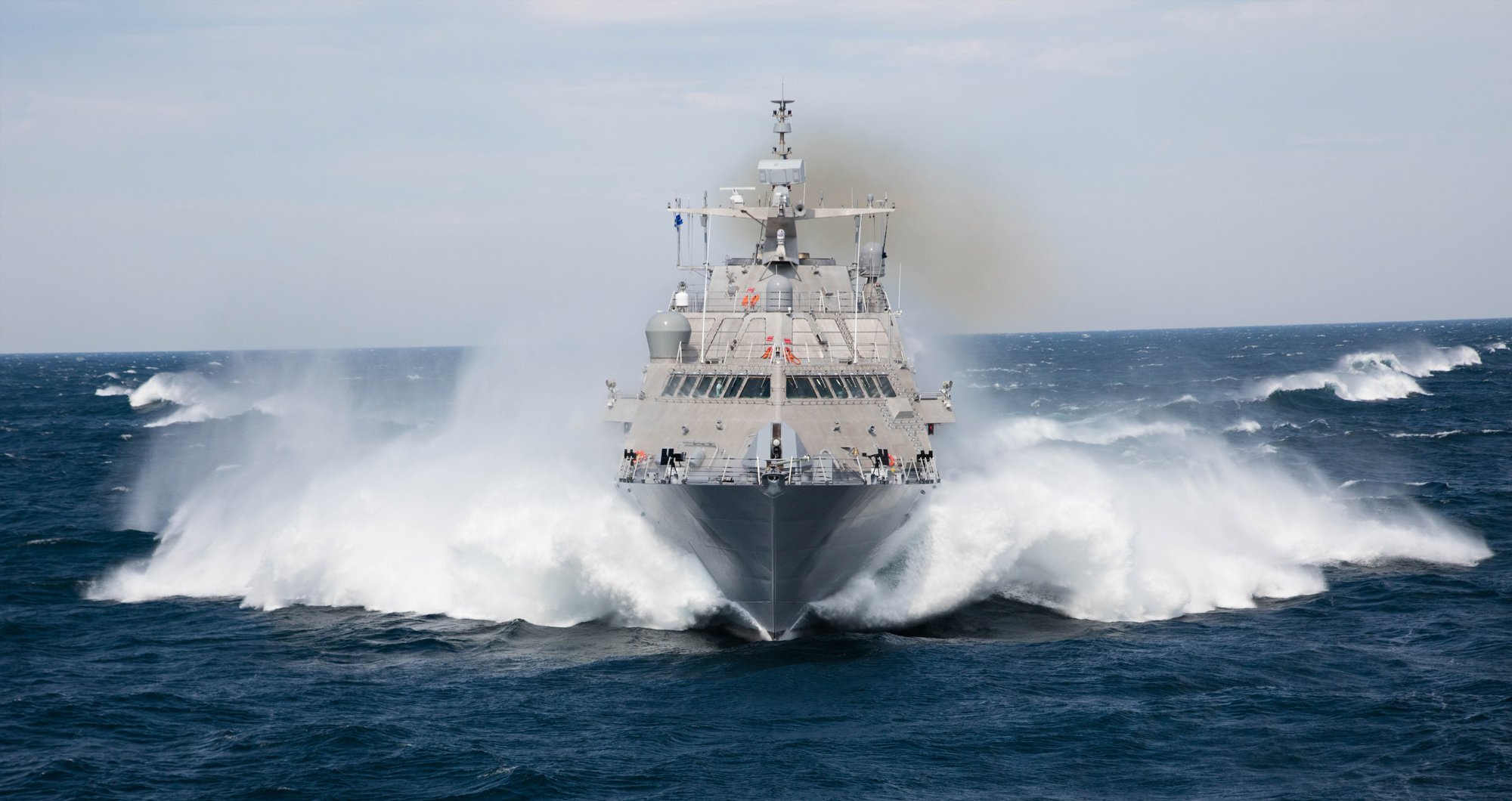
The Navy’s newest Littoral Combat Ship – USS Milwaukee (LCS-5) – could be sidelined for weeks to repair an engine casualty that occurred last week during an Atlantic Ocean transit.
Lockheed Martin and the service are currently working through the total scope of the repair package for the gearings that connect the ship’s main engines to its water jets and timelines are far from adamantine.
But according to an initial assessment of the damage obtained by USNI News, and two sources familiar with the extent of the repair requirements, that timeline could push the work well into the new year.
“All concerned agree this will be a lengthy process,” read the early assessment seen by USNI News.
Naval Surface Force Pacific did not give a time estimate for completion of the work but did say it appears the damage to Milwaukee is not a issue throughout the Freedom-class, said spokeswoman Lt. Rebecca Haggard.
The ship was towed about 40 nautical miles to Joint Expeditionary Base Little Creek-Fort Story. Once pier side, the service found significant amount of gold and black debris in both the port and starboard combining gear of the propulsion system.
The crew of the ship first noticed particulate last week when in transit from Halifax, Canada to Naval Station Mayport, Fla.
“The Milwaukee crew initially took action [Dec. 7] when they discovered very fine metallic debris in the port combining gear filter system. The crew cleaned the combining gear filters following established procedures, but locked the port shaft as a precautionary measure to prevent possible shaft damage,” read a statement from the service.
“[Dec. 10] evening, while conducting routine steering checks, the ship lost pressure in the starboard combining gear lube oil system. The casualty was due to similar metallic debris contamination of the filter.”
Navy Times broke the story for the propulsion failure last week and reported the ship’s crew was alerted by a computerized monitoring system to the propulsion trouble.
The following is a description from an American Gear Manufactures Association technical paper on Freedom-class propulsion system.
Four water jets are driven by two symmetrically arranged [Combined Diesel and Gas (CODAG)] systems, where the high speed combining gear and the low speed splitter gear are separately installed, linked by long intermediate shafts each. Gas turbines and diesel engines can be engaged separately in cruise or higher speed propulsion modes, or jointly drive the water jets achieving a top speed in excess of 40 knots in this CODAG mode. To match with different required water jet speeds, the diesel engine inputs are equipped with two gear stages where the adequate gear ratio is selected via a multi disc clutch engagement.
“Engineers cleaned out the metal filings from the lube oil filter and locked the port shaft as a precaution,” according to the paper’s Scoop Deck blog.
“In the early hours of Friday morning, the ship was conducting steering tests and lost lube oil pressure in the starboard combining gear due to the presence of the same metal filings in that filter.”
The pair of combining gear links the high RPM output of the ship’s two massive Rolls Royce MT-30 gas turbines with the lower RPM output of the two Colt-Pielstick diesel engines and then to the ship’s shafts that drive the water jets.
The Combined Diesel and Gas (CODAG) propulsion scheme allows the semi-planning mono-hull the power to achieve the speeds of up to 40 knots.
The ship, the third in the Freedom-class, commissioned into the service late last month.





